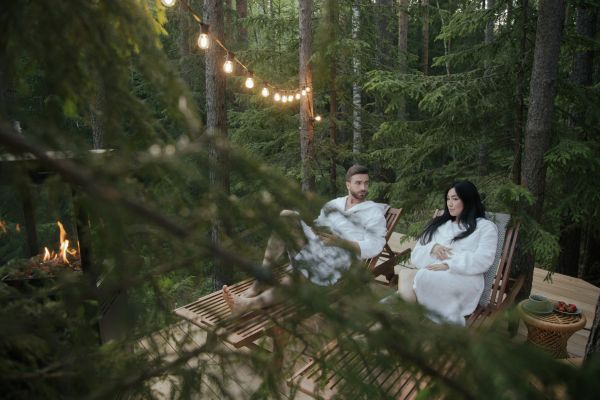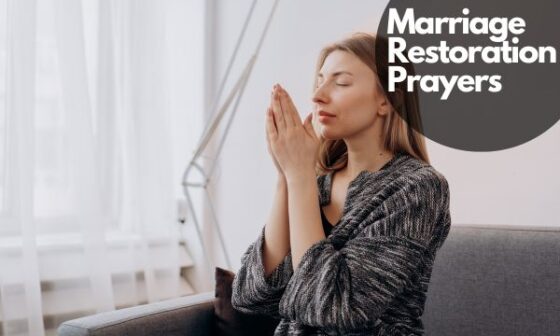In today’s rapidly evolving world, where societal norms and personal aspirations are constantly changing, traditional concepts of love, commitment, and relationships have undergone a profound transformation. One of the most significant shifts in recent years is the increasing trend of couples choosing to open up their relationships.
This seismic shift challenges conventional notions of monogamy, paving the way for a more inclusive and diverse landscape of love. So, what’s behind this growing phenomenon of couples embracing open relationships? Let’s delve into the intriguing world of non-monogamy and explore why more couples are opting to “open up.”
Why More Couples Are Opening Up
The choice of opening up a relationship, often referred to as “open relationships” or “non-monogamy,” can be influenced by a variety of factors that reflect evolving social norms, individual desires, and changing perspectives on romantic relationships. Here are some reasons why more couples might be considering or opting for open relationships:
1. Changing Social Norms
Over time, societal attitudes toward relationships and marriage have evolved. Non-traditional relationship structures are being more openly discussed and accepted, which can encourage couples to explore alternatives to traditional monogamy.
2. Personal Freedom and Autonomy
Many individuals and couples value personal freedom and autonomy. Open relationships can provide a way to maintain individuality and independence while also experiencing romantic connections.
3. Communication and Honesty
Open relationships require a high level of communication, honesty, and transparency. Couples who are willing to engage in these conversations might find that it strengthens their emotional intimacy and trust.
4. Exploration and Variety
Some couples open up their relationships in order to explore different sexual experiences, fantasies, or connections with others while maintaining their primary partnership.
5. Embracing Diversity
People have diverse needs, desires, and sexual orientations. Some couples find that an open relationship allows them to accommodate their unique preferences while staying committed to their partner.
6. Emotional Growth
Navigating an open relationship can encourage personal growth, self-discovery, and self-awareness as individuals confront feelings of jealousy, insecurity, and emotional challenges.
7. Long-Distance Relationships
In cases where partners are geographically separated, open relationships might be considered as a way to address physical intimacy needs while maintaining an emotional connection.
8. Avenues for Connection
Some couples find that opening up their relationship provides them with additional social connections and a sense of community within non-monogamous circles.
9. De-stigmatization
As conversations around alternative relationship structures become more mainstream, couples might feel less stigmatized and more empowered to openly discuss and pursue their preferences.
10. Customization of Relationship Dynamics
Relationships are not one-size-fits-all. Couples are increasingly customizing their relationships to suit their individual needs and priorities.
It’s important to note that open relationships are not suitable for everyone, and they require careful consideration, mutual consent, communication, and adherence to boundaries. The decision to open up a relationship should be made by both partners after thorough discussions and an understanding of the potential challenges and benefits involved.
If couples are considering opening up their relationship, seeking guidance from relationship therapists, counselors, or experienced individuals in the non-monogamous community can be helpful in making informed decisions and navigating the complexities that come with non-traditional relationship structures.
Defining Open Relationships
Monogamy, long ingrained in cultural norms, is being challenged by the concept of open relationships. While monogamy involves an exclusive romantic and sexual connection between two partners, open relationships encompass a range of arrangements that allow for connections with multiple partners. This can include polyamory, where individuals engage in romantic relationships with multiple people, or swinging, where couples engage in consensual partner swapping.
Changing Perspectives on Love and Relationships
Society’s evolving views on love and relationships have played a pivotal role in the rise of open relationships. As cultural norms shift, there is a growing recognition that love is not a one-size-fits-all concept. Couples are increasingly valuing authenticity and autonomy, leading them to explore alternative relationship models that align with their personal beliefs.
In today’s world, love is viewed as a dynamic and fluid force that can be expressed and experienced in various ways. This shift has created an environment where couples feel empowered to define their relationships on their terms, breaking away from the constraints of traditional monogamy.
Communication and Trust
Central to the success of open relationships is effective communication and unwavering trust between partners. Unlike traditional relationships where exclusivity is assumed, open relationships require candid conversations about desires, boundaries, and expectations. This level of transparency not only fosters a deeper connection but also mitigates potential misunderstandings.
Trust, a cornerstone of any healthy relationship, takes on heightened significance in open partnerships. Partners must trust each other to honor agreed-upon boundaries and prioritize each other’s emotional well-being, even as new connections are forged.
Personal Growth and Exploration
Open relationships offer a unique avenue for personal growth and self-exploration. Partners are encouraged to pursue individual passions, hobbies, and interests outside the relationship. This autonomy can lead to a deeper understanding of oneself, allowing individuals to bring enriched experiences back to the partnership.
The freedom to explore connections with other people can also lead to a heightened sense of self-awareness. Partners may discover new facets of their own identity and develop a stronger sense of empathy, both of which contribute to a more fulfilling and enriching relationship with their primary partner.
Navigating Jealousy and Insecurity
One of the most common challenges in open relationships is navigating feelings of jealousy and insecurity. These emotions are natural and, when addressed openly, can lead to growth and understanding. Partners in open relationships must learn to identify and communicate their feelings, finding constructive ways to manage and overcome jealousy.
Building emotional resilience and practicing self-compassion are essential in addressing jealousy. Partners can work together to develop strategies that acknowledge these emotions while focusing on the positive aspects of the relationship.
Ethical Non-Monogamy
A key principle in open relationships is ethical non-monogamy, which emphasizes consent, communication, and respect among all partners involved. Polyamory, for example, involves engaging in multiple romantic relationships with the knowledge and consent of everyone involved. Swinging, on the other hand, centers around shared sexual experiences with other couples.
The ethical foundation of these arrangements ensures that all parties are aware of and comfortable with the dynamics at play. Boundaries are set and regularly revisited, ensuring that each partner’s needs and emotional well-being are prioritized.
Impact on Intimacy
Contrary to common misconceptions, open relationships do not necessarily diminish intimacy; rather, they encourage partners to redefine and explore the nature of intimacy. Emotional closeness can deepen as partners share their experiences and emotions with one another, fostering a unique connection that transcends physical exclusivity.
In open relationships, partners often prioritize intentional communication, creating a space for vulnerability and mutual understanding. This focus on emotional intimacy can lead to a more profound and enduring bond.
Real-Life Examples
Stories of couples who have successfully navigated open relationships provide valuable insights into the challenges and rewards of this unconventional approach to love. These narratives shed light on the importance of effective communication, emotional resilience, and a shared commitment to personal growth.
Couples share their experiences of juggling multiple relationships, managing jealousy, and finding joy in their partner’s happiness. These stories dispel misconceptions and offer a glimpse into the genuine connections that can flourish within open relationships.
Navigating Social Stigma
The decision to open up a relationship can be met with skepticism and judgment from society at large. However, as the stigma surrounding non-traditional relationships gradually recedes, couples are finding support within like-minded communities and online platforms.
Navigating social stigma requires a combination of self-assuredness and education. By engaging in open dialogue and advocating for the validity of their choices, couples can challenge misconceptions and promote a more inclusive understanding of love and relationships.
Challenges and Considerations
While open relationships offer unique benefits, they also come with their share of challenges. Partners must be prepared to navigate emotions such as jealousy, insecurity, and fear of abandonment. Open relationships may also require renegotiating boundaries as new connections are formed.
It’s essential for couples to embark on this journey with a strong foundation of trust, self-awareness, and open communication. The decision to open up a relationship should be a mutual and well-considered choice that aligns with both partners’ desires and values.
Seeking Professional Guidance
For couples exploring the possibility of opening up their relationship, seeking professional guidance can be invaluable. Therapists and relationship counselors experienced in working with non-monogamous clients can provide insight, guidance, and tools to navigate the complexities of open relationships.
A skilled professional can facilitate discussions, offer coping strategies, and help couples establish a solid framework for communication and boundary-setting. Seeking guidance demonstrates a commitment to the health and longevity of the partnership.
Cultural and Regional Variations
The acceptance and prevalence of open relationships vary across cultures and regions. Some societies have a long history of embracing non-monogamous arrangements, while others may still hold conservative views on romantic partnerships.
Understanding cultural and regional variations is crucial for couples considering opening up their relationship, especially if they live in an environment where non-traditional relationships may be met with resistance. Researching local attitudes and seeking support from open-minded communities can provide valuable insights.
Long-Term Viability
One of the most frequently asked questions about open relationships pertains to their long-term viability. While there is no one-size-fits-all answer, the success of an open relationship depends on factors such as effective communication, mutual respect, and a shared commitment to personal growth.
Open relationships can indeed thrive over the long term, provided that partners remain dedicated to nurturing the connection and addressing challenges as they arise. The ability to adapt, communicate openly, and continue fostering emotional intimacy are key factors in sustaining a fulfilling open partnership.
Conclusion
The increasing prevalence of couples exploring open relationships signifies a broader cultural shift towards individual autonomy, open communication, and the recognition that love takes on myriad forms. As societal norms evolve, couples are embracing alternative relationship models that allow for personal growth, authentic connections, and a deeper understanding of love’s complexities. While the journey of opening up a relationship may be met with challenges, the rewards include enriched personal experiences, profound emotional connections, and the opportunity to redefine love on one’s own terms.
FAQs
1. Is an open relationship the right choice for every couple? Opening up a relationship is a deeply personal decision that depends on the values and desires of the individuals involved. It’s essential for partners to communicate openly and ensure that both parties are comfortable with the arrangement.
2. Can jealousy ever be a positive aspect of an open relationship? Yes, jealousy can serve as a catalyst for growth and introspection. When addressed constructively, jealousy can lead to deeper self-awareness and stronger emotional connections.
3. How do you establish and maintain boundaries in an open relationship? Setting clear and mutual boundaries is crucial. Regular communication, revisiting boundaries, and respecting each other’s comfort zones are essential for maintaining a healthy open relationship.
4. Are open relationships more common among younger generations? Open relationships are not limited to any specific age group. While younger generations may be more open to exploring non-traditional relationship models, people of all ages can choose to open up their partnerships.
5. Can an open relationship evolve into a more traditional monogamous one? Yes, relationship dynamics can evolve over time. Some couples may find that their preferences change, leading them to transition from an open relationship to a monogamous one, or vice versa. Communication is key in navigating such transitions.







